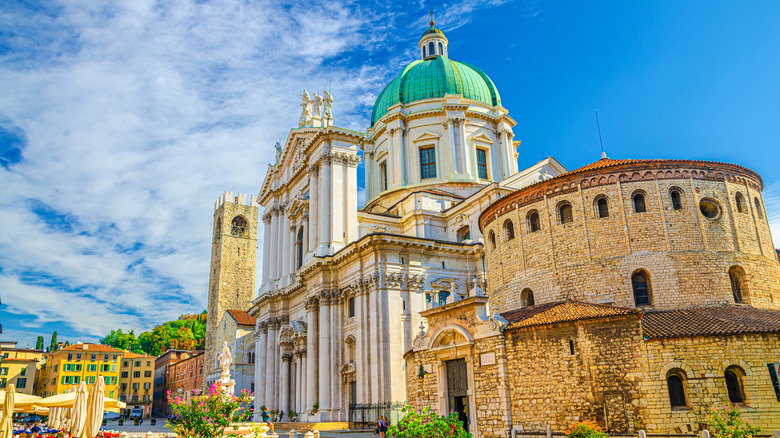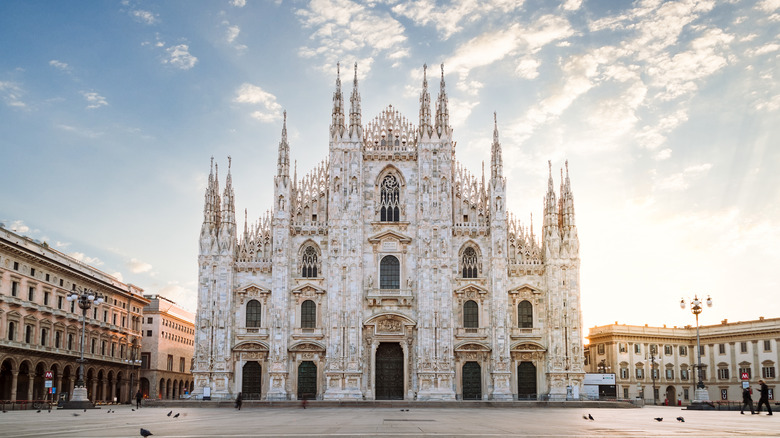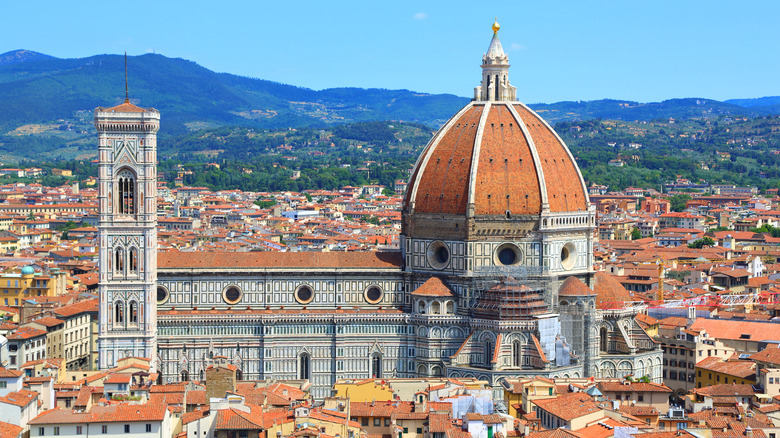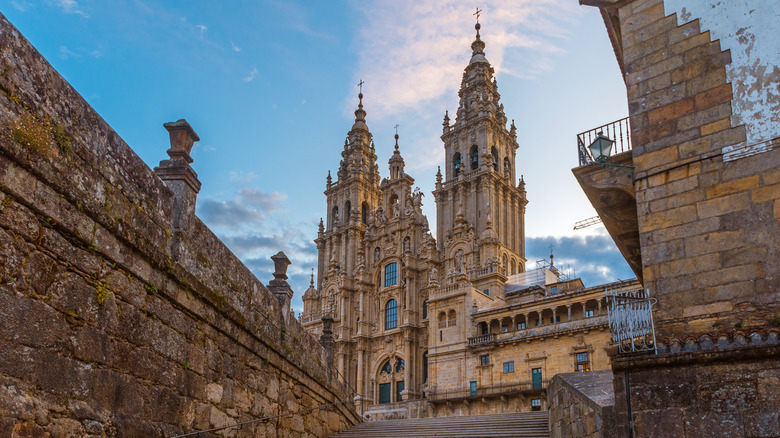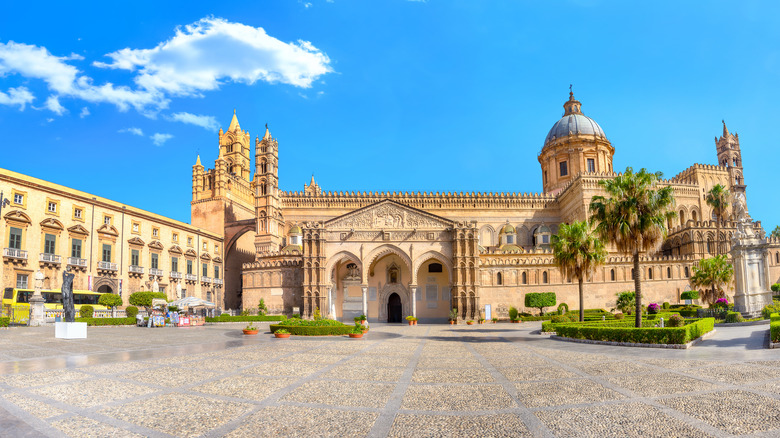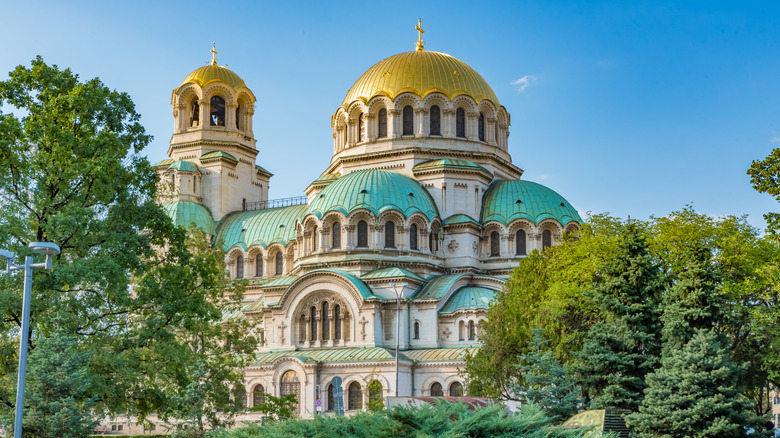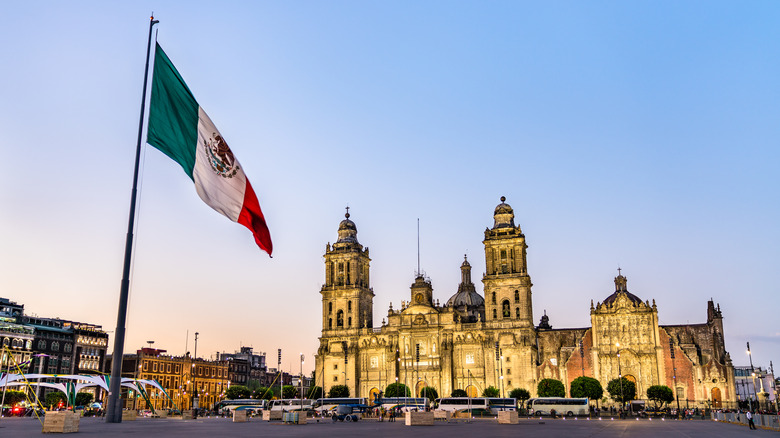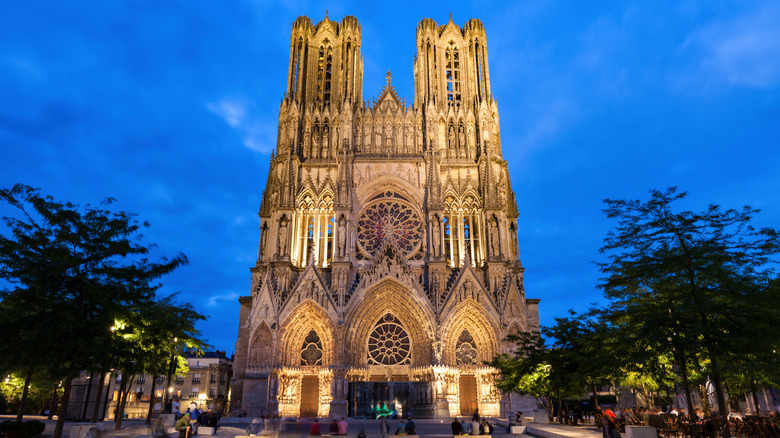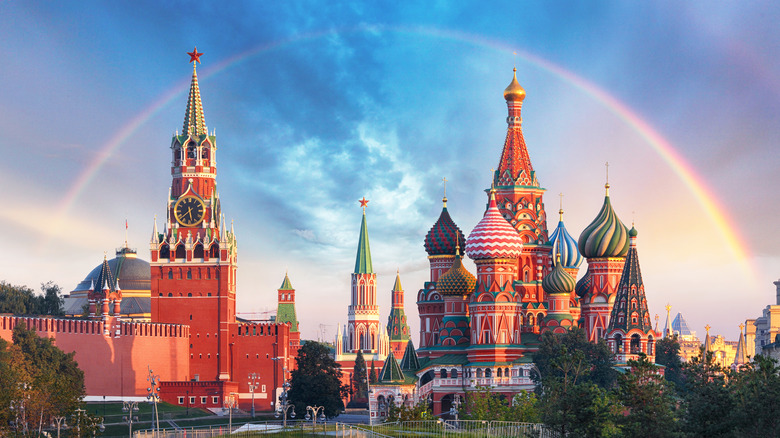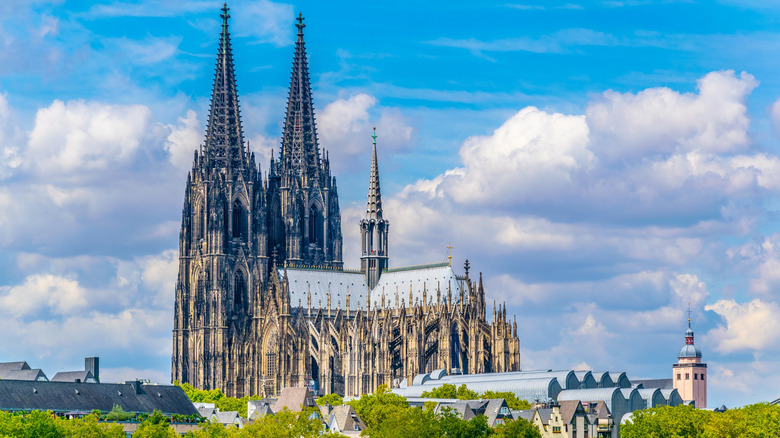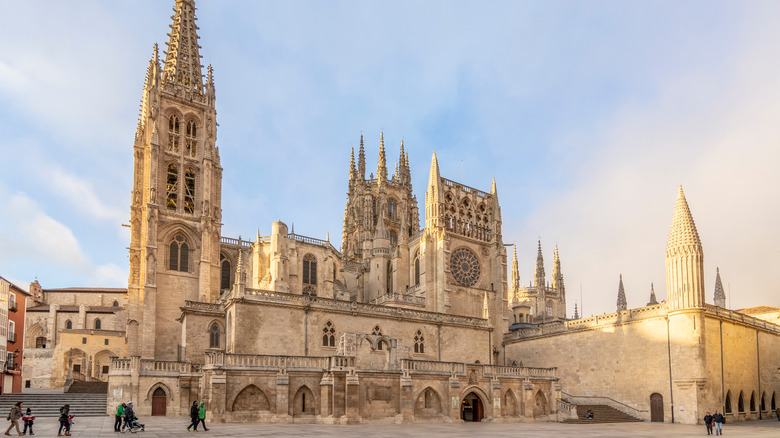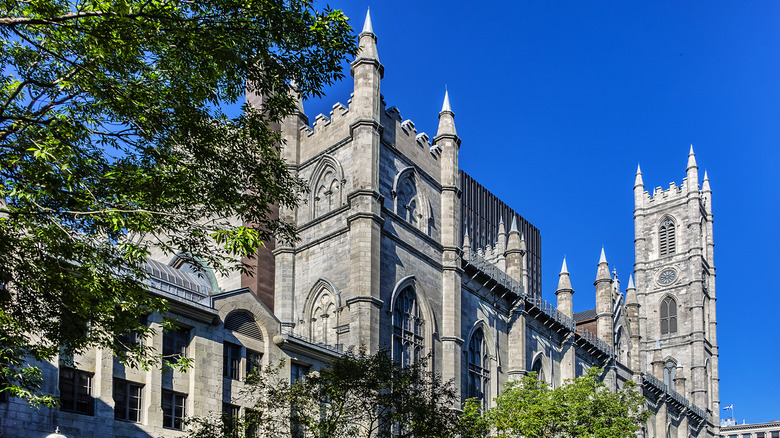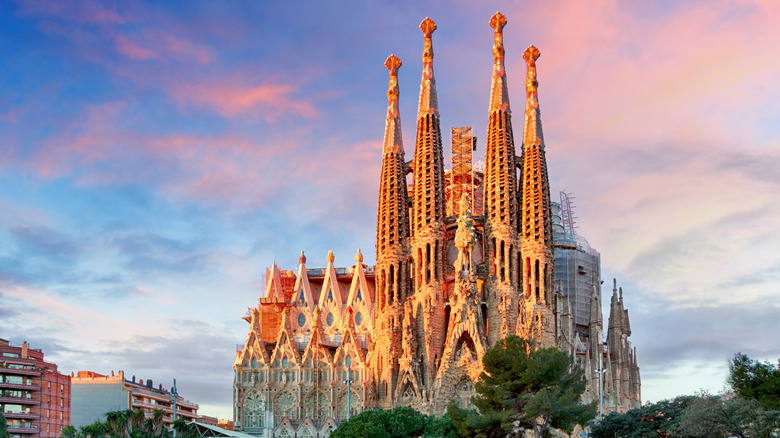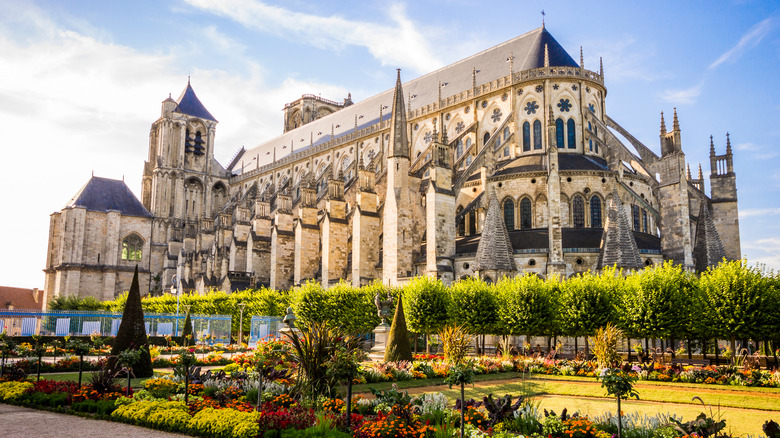The Most Stunning Cathedrals Around The World
One of the most special parts of traveling is being able to go sightseeing and explore all of the unique and historic museums, churches, castles, and basilicas. While not everyone is super interested in the cultural and historical side of travel, it is nearly impossible to not find yourself awestruck while looking upon the massive and intricate cathedrals that can be found scattered across Europe and a few other parts of the world.
Though certain cathedrals such as the Notre Dame in Paris are undeniably more famous than others, that doesn't necessarily mean that they are the most breathtaking. In fact, many of the larger and more popular cathedrals can be a bit of a struggle to enjoy while visiting due to the influx of tourism and the inability to move about comfortably in the crowds. While this doesn't mean that those cathedrals aren't worth visiting, it does mean that you should not limit your scope to these specific sites. Here at House Digest we've rounded up a list of the most stunning cathedrals around the world to help add some special spots to your bucket list!
The Duomo of Milan is a gorgeous Gothic cathedral
The Duomo of Milan in Italy is a cathedral that is dedicated specifically to the nativity scene of Saint Mary. It is also the seat of the current Archbishop of Milan, Archbishop Mario Delphini. More than 600 years old, the first construction of the Duomo of Milan began in 1386. However, due to the complicated and drawn out list of architects and designers who headed the project over the years, it is basically impossible to nail down a specific authorship of the cathedral. At one point, even Leonardo da Vinci tried lending a helping hand at designing the complex lantern tower.
Between the stained glass windows and the striking spires along the roof of the cathedral, the Duomo of Milan truly stuns at the first site. The amount of detailing and energy that went into creating this one-of-a-kind piece of architecture can truly be felt by even the most uninvested of viewers. Though it has many elements of Renaissance architecture, the overall style of this cathedral is more closely related to Gothic.
Santa Maria del Fiore is the third largest church in the world
Designed by Arnolfo di Cambio in 1296, Florence, Italy's Santa Maria del Fiore is the third largest church in the entire world. When it was completed in the 15th century, the cathedral was actually the largest church in Europe until Rome's St. Peter and London's St. Paul came along. Dedicated to the "Virgin of the Flower," the Santa Maria del Fiore was the third and final cathedral to be built in Florence. Given the name and certain details found in the cathedral's design, the structure is a very specific and clear tribute to the lily flower, which is in fact the city's symbol.
Unlike many other cathedrals, Santa Maria del Fiore houses a number of different architectural styles and tastes, showing the evolution of preference and design throughout the many years of its construction. Basically, the direction that it was going when the foundation was first laid changed drastically by the end of its completion.
Santiago de Compostela Cathedral has incredible apocalypse artwork
Located in Galicia, Spain, the Santiago de Compostela Cathedral serves as the final stop on the famous Catholic pilgrimage trail. It is a cathedral that houses many different styles and features the famous figure of Saint James sitting on a large column appearing to welcome visitors and those on their pilgrimage. The Santiago de Compostela Cathedral's most distinct and renowned feature is definitely the church's Obradoiro façade which is considered to be one of the supreme examples of the Spanish Baroque style.
Another more unique and somewhat interesting fact about this cathedral is the display of 200 figures that refer to the apocalypse. Though this might be a bit disturbing to some, the artwork and design used to create these figures is absolutely stunning and fascinating despite the grim meaning behind them. While the original design of the structure was built on a floor plan of Latin Cross, there have been a countless number of extensions added to the cathedral over the years. These extensions are what have allowed for this stunning piece of architecture to showcase various styles including neoclassical, Romanesque, Plateresque, and of course, Spanish Baroque.
The Palermo Cathedral displays stunning Norman architecture
Built over the site that originally housed a Muslim Mosque, the Palermo Cathedral in Sicily is one of the only cathedrals on our list that displays Norman architecture. In an attempt to one-up the beauty of the Cathedral of Monreale, the Palermo Cathedral was born. Built by the Normans in 1184, there are definite hints of Gothic, Neoclassical, and obviously Arab influences throughout the building. In fact, in one of the cathedral's columns, a passage from the Qur'an can be found engraved along the wall.
The exterior of the Palermo Cathedral is absolutely exquisite, while the inside has diverse art that can be explored free of charge. However, the most interesting parts of the cathedral require tickets to be visited, though they are well worth it. For example, the treasury of the cathedral allows visitors to see an array of enameled objects as well as precious gold and silver artifacts. Another must-see part of the cathedral is the crypts, which house intricately adorned marble sculptured sarcophagi.
The bells of St. Alexander Nevsky Cathedral can be heard for miles
Located in Bulgaria's capital city of Sofia, St. Alexander Nevsky Cathedral was uniquely built in the Neo-Byzantine style, causing it to truly stand out among its more traditional counterparts. Considered to be one of the 50 largest Eastern Orthodox churches in the world, the cathedral can fit up to 10,000 worshippers at a time. The wintergreen and gilded domes are certainly what catch the eye first, while the ornate stone carvings, mosaics and murals stun upon viewing. Proving its power and impact, the 12 bells of the St. Alexander Nevsky Cathedral, which weigh a combined total of 23 tons, can even be heard from a distance of almost 10 miles.
Though the church was named after the Russian prince Saint Alexander Nevsky, the cathedral itself was built in order to honor those who died in the Russo-Turkish War that occurred between 1877 and 1878. Being that this war resulted in Bulgaria being freed from the Ottoman Empire, this was a revolutionary and historical moment worth commemorating.
The Metropolitan Cathedral is the largest in Latin America
One of the only non-European cathedrals on our list, The Metropolitan Cathedral in Mexico City is one of the country's most treasured and beloved pieces of architecture. In addition, it is also the biggest and oldest cathedral in all of Latin America. With a creation that extends beyond three centuries, it would make sense The Metropolitan Cathedral also features three distinct architectural styles. With a mixture of Baroque, Neo-Classic, and Neo-Renaissance, this cathedral has a jaw-dropping effect on those who look upon it for the first time.
Though the outside of the cathedral is gorgeous, with intricate towers and massive, wooden doors, the inside of The Metropolitan Cathedral is where the true beauty and magic lies. There are countless paintings, religious artifacts, and even crypts to be explored in every crack and cranny of this amazing structure. In fact, it is pretty much impossible to notice each beloved detail within one visit. In the altar of forgiveness, gold coating can be found along every surface and the striking and towering ceilings create a grandiose atmosphere that is hard to match.
Reims Cathedral in France is a World Heritage site
Dedicated to the Virgin Mary, the Reims Cathedral in France was once the location of the king's coronation for over 1,000 years. Now, this gorgeous cathedral stands as one of the most defining structures of Gothic art. Reims Cathedral was even named as a World Heritage site in 1991, showcasing just how impactful this cathedral was to the history of France and the world.
With 2,300 statues throughout the entire cathedral, it is no wonder as to why the Reims Cathedral is known for having the most stunning Gothic sculptures in all of France. On top of that, the Reims Cathedral is the only cathedral to showcase angles with their wings open rather than closed. Sitting in the western façade of the north portal, visitors of the cathedral will find the famous smiling angel sculpture that has drawn hundreds of thousands of tourists to the holy site alone. Some other highlights to take note of include the cut stone arches, traditional tabernacles, and statue-columns.
St. Basil's Cathedral is one of Russia's most stunning buildings
Perhaps one of the most iconic cathedrals on our list, St. Basil's Cathedral in Moscow is hands-down one of the most unique and extraordinary cathedrals in existence. Built between 1555 and 1561, this cathedral is far from traditional in regards to architecture and design. Between the vibrantly colored domes and red-brick towers, it is pretty much impossible to miss when exploring Moscow. With the nine different domes of the church belonging to nine different chapels, they were specifically created in that way in order to symbolize the historical assault on the city of Kazan.
In regards to the actual structure of St. Basil's Cathedral, there is a heavy influence from architectural designs found in Jerusalem. Also, though the outside of the cathedral is unbelievably colorful and eye-catching, the interior is surprisingly modest, filled with simple décor and very narrow passageways. Despite suffering damage from a variety of travesties such as lootings and fires over the years, the cathedral still stands in glory as one of the most stunning sites to see in Russia.
The Cologne Cathedral has a shrine to the Three Wise Men
Declared a World Heritage site in 1996, the Cologne Cathedral in Germany displays a marvelous work of Gothic architecture right along the Rhine River. It serves as the current seat of the Archbishop of Cologne and is said to be the hallmark of the entire city. Even to this day, the Cologne Cathedral is the second tallest building in the city, only surpassed in height by the more modern telecommunications tower.
Perhaps the most holy and important feature of this cathedral is the shrine to the Three Wise Men, which was originally housed in the building that sat in the same location prior to the Cologne Cathedral being built. In fact, the idea to build a cathedral came once it was decided that the original building was no longer worthy of holding the Three Wise Men's remains which had been brought from Milan to Cologne by Archbishop Rainald von Dassel in 1164.
The Burgos Cathedral took 350 years to complete
The Spanish Burgos Cathedral manages to include the whole sum of Gothic architecture in its specific collection of art and encompassing structure that has been in existence since 1567. Though construction on the cathedral began in 1221, it took nearly 350 years to bring this iconic building to completion. One particularly special part of the Burgos Cathedral is the fact that the foundational plan of the cathedral is based on a Latin Cross. This Latin Cross used holds harmonious proportions of 84 by 59 meters, creating an even more special and holy connection within the cathedral itself.
Despite the fact that the Burgos Cathedral is in Spain, the architecture and design was heavily influenced by the cathedrals that were also being created around the same time in France. For example, The vaulted ceilings, three-story elevation, and shape of the church windows all reflect the Gothic style and architecture that can be found in many of the French cathedrals in the north. Some highlights of the Burgos Cathedral that you won't want to miss while visiting are the choir stall, tombs, and stained-glass windows.
The Notre-Dame Basilica is a Canadian treasure
Not to be confused with the Notre Dame in Paris, Montreal's Notre-Dame Basilica is one of Canada's most incredible structures. Though the outside is very beautiful, and somewhat reminiscent of Paris' Notre Dame cathedral, the inside of this marvelous basilica is where the real magic lies. Between the intricately designed vaulted ceilings and the colorful and image-adorned pillars and walls, guests of the Notre-Dame Basilica will be stunned upon walking through the church archways.
One of the most fascinating facts about the Notre-Dame Basilica is the fact that the entire interior of the cathedral is painted, sculpted, and covered in gold leaf. Another feature that tends to turn heads is the 7,000-pipe organ that serves as a centerpiece at the front of the church. Also, rather than being forced to attend a guided tour as is necessary with many cathedrals in Europe, visitors of the Notre-Dame Basilica in Montreal are able to go on a self-guided tour and explore each and every detail and piece of history at their own pace. They also host mass every single day at specific times for those looking to catch an actual service during their time at the cathedral.
La Sagrada Familia towers over Barcelona
Designed by architect Antoni Gaudí, the La Sagrada Familia in Barcelona is an incomplete cathedral that has been under construction for more than 135 years since the initial laying of the cathedral's cornerstones. Unlike many other cathedrals, this church in particular was designed with the citizens of Barcelona in mind, making it a site that was promoted as being "by the people, for the people." Though the original design for La Sagrada Familia was done by Francisco de Paula del Villar in 1882, Gaudí quickly took the project over in 1883. Eventually, La Sagrada Familia became Gaudí's exclusive project up until his passing in 1926.
Despite the cathedral being his pride and joy for many years, the only truly finished part of the structure that Gaudí was able to see before dying was the massive bell tower which was dedicated to the apostle Barnabas. Since, the cathedral has come a long way, and the citizens of Barcelona are sure to enjoy when the entire tower of the Virgin Mary will be lit up and shine over the entire city of Barcelona.
The Bourges Cathedral is a Gothic masterpiece
Built between the late 12th and 13th centuries, the Bourges Cathedral in France is considered to be one of the most magnificent structures of the Gothic style in history. It is best known for its symmetrical proportions and cohesive design that manages to evoke a sense of harmony and completion while standing within the cathedral walls. The most striking feature to be found in the cathedral is certainly the primarily red and blue stained glass windows, though some other special highlights of the Bourges Cathedral include the intricate tympanum that can be found at the entrance along with the sculptures that are engraved throughout the walls.
Though there is no denying just how stunning this cathedral truly is, it is also a bit intimidating due to its size and sense of power. This energy showcases just how powerful the Roman Catholic church was during the time that it was built. In addition to being a place of worship and holiness, the Bourges Cathedral also served as a show of dominance and strength. In fact, this church has remained unaltered and has been totally preserved despite the immense amount of time that has passed.
